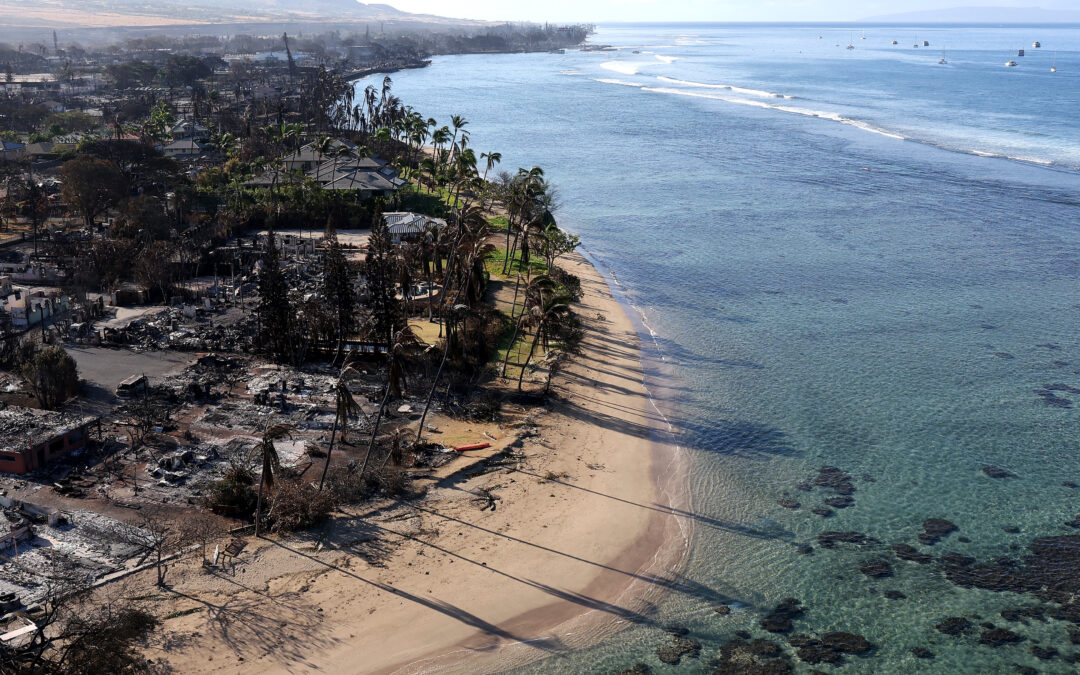The Maui wildfires that tore through the historic town of Lahaina last week have become the deadliest in modern U.S. history, killing more than 100 people, reports The Washington Post. Homes, condominiums, schools, and businesses were reduced to rubble by the fast-moving inferno.
“The devastation is unreal. I know of six condo associations that burned to the ground. Many people lost everything,” says Bill Dix, CMCA, AMS, PCAM, who spent 20 years living on the island of Maui and 12 years as a community manager managing several condo associations in the Lahaina area.
According to the Foundation for Community Association Research, there are between 2,000 and 3,000 community associations in Hawaii with 28% of the population living in homeowners associations or condominiums.
Dix, now general manager of SunRiver St. George Community Association in St. George, Utah, recently spoke with Doug Lefler, CMCA, vice president of the Maui division of Hawaiiana Management Company, Hawaii’s largest association management company. “They have lost several entire communities, burned to the ground. Owners and residents lost homes; many lost their jobs and pets. Business partners lost their businesses.”
Hawaiiana provides management services for more than 100 properties on Maui, Lanai, and Molokai, according to the company’s website. In an Aug. 12 update on the site, Hawaiiana reported that it was difficult to assess or understand the full scope of the damage to all the associations that were affected by the Maui wildfires because communication and access was still limited. “Know that Hawaiiana is continuing to monitor what is still a very active situation and will post updates … as they are known,” the post stated.
Kanani Kaopua, PCAM, president of the CAI Hawaii Chapter says community managers are a part of the thousands who lost their homes and loved ones. “It is difficult to sum up what a community manager is to do under this level of immense devastation,” she adds. “Resiliency is a word I hear every day in news stories and reports from those on the ground, including those with loved ones missing or confirmed dead.”
Like the Maui wildfires, disasters can be devastatingly quick. That’s why experts say it is crucial for community associations to prepare for worst-case scenarios, including clearing debris within 5 feet of a home, replacing mulch with gravel or stone, cleaning out gutters regularly, and moving wood fencing attached to a home.
The Hawaii chapter is compiling a list of several different organizations for donations and support. It hopes to help community association residents and managers find temporary lodging, pay rent, and buy food and other household goods and supplies.
“Even though the total devastation of historic Lahaina town is a punch to the gut of Hawaii and the tragic loss of life and property, there is a groundswell of locals helping families. It’s going to be a long road back,” says Dix.
>>Visit Maui Strong – Hawaii Community Foundation to help residents recover. CAI also created a list of relief and recovery programs for homeowners and community associations.
Note: CAI is holding the Large-Scale Managers Workshop in Hawaii Oct. 4–7. The workshop will continue as scheduled. The recent wildfires impacted the islands of Maui and Hawaii. The workshop is in Honolulu, which is located on the island of Oahu. CAI and the Large-Scale Managers Committee will continue to monitor the situation.


